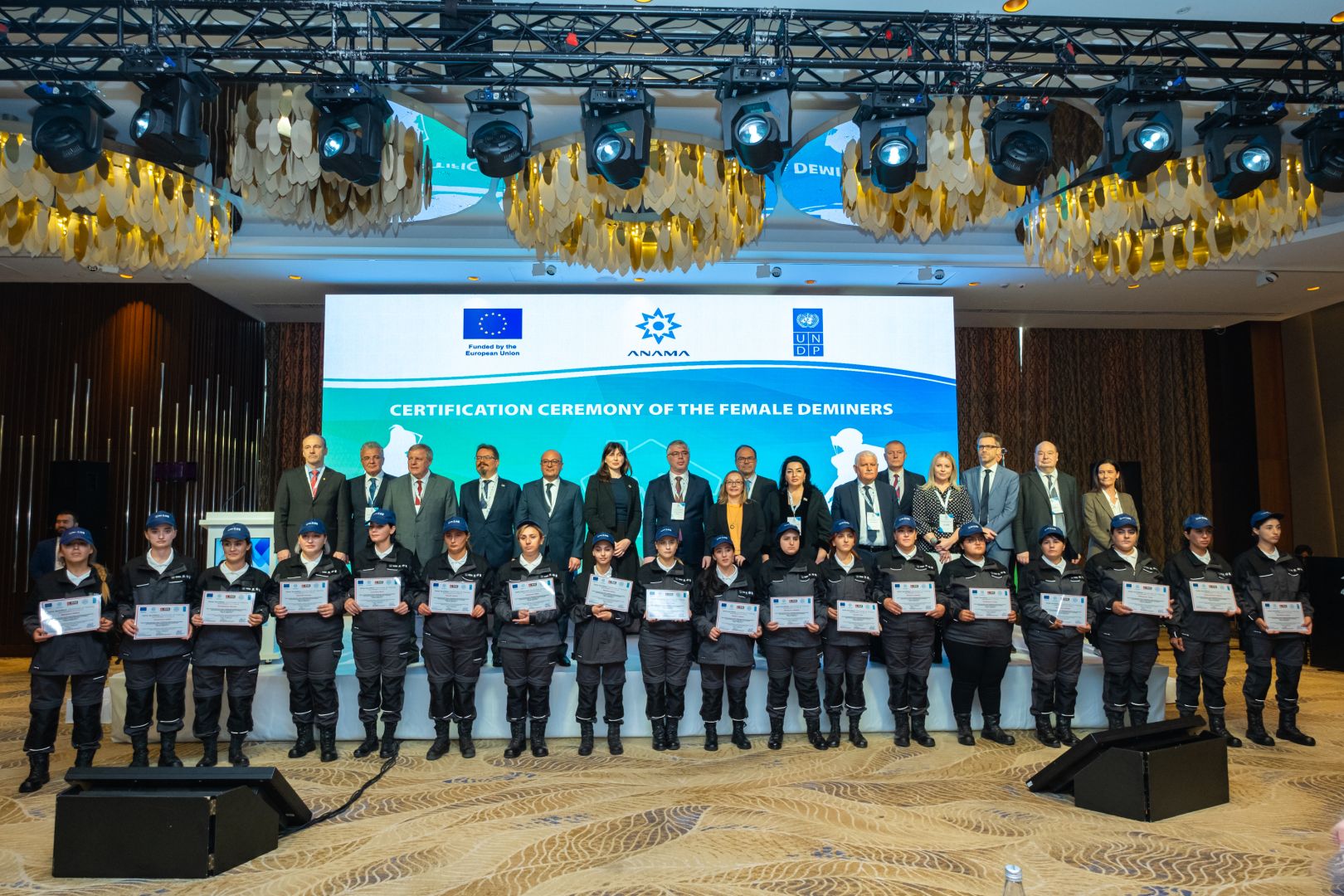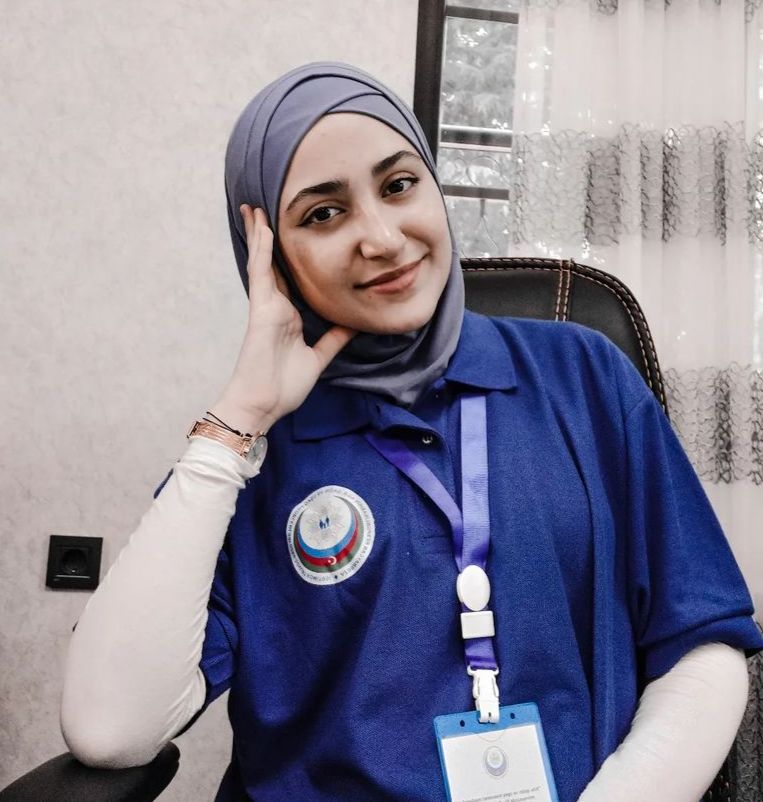Azerbaijan's brave women take on honourable mission for mine-free Garabagh

The liberation of Azerbaijan's Armenian-occupied territories in 2020 was a watershed moment for Azerbaijanis, particularly over 700,000 displaced people who had to move from their homes in the early 1990s. After decades of displacement, Azerbaijanis were able to return to their homelands and rebuild their communities.
This great occasion, however, has been overshadowed and ruined by the widespread presence of landmines and explosive war remnants left by Armenia. Throughout the period of conflict and the Armenian occupation of Azerbaijan’s territories, Armenia indiscriminately planted hundreds of thousands of mines and other explosive devices in the territories, including the areas where civilians lived.
According to Vugar Suleymanov, the Chairman of the Management Board of the Azerbaijan National Agency for Mine Action (ANAMA), the number of mine victims since the Second Garabagh War has reached 350 and 65 of them died. More than 70% of landmine victims are civilians. Among them are people of all age categories. The total number of landmine victims in Azerbaijan is 3,429, including 357 children and 38 women. 595 of those people lost their lives.
Despite attempts at formally requesting information about the location of those mines, Armenia repeatedly denied that it possessed the relevant information and refused to engage on the issue.
Finally, in February this year, Armenia has submitted 8 minefield maps of territories located in the liberated lands to Azerbaijan. These maps cover some of the areas along the former contact line. However, the maps covering part of the former contact line passing through Khojavand, Tartar, and Goranboy districts, as well as the areas mined by Armenian military units when they retreated in November 2020, has not been submitted yet.
Many have suspicions about these maps because previous minefield maps submitted by Armenia were inaccurate. Only 25 percent of these maps were correct. Especially submitting minefield maps of the height where civilians do not live increases this suspicion. It is also worth noting that more than 55% of recent landmine cases have occurred outside the areas covered by the information provided.
The behavior that Armenia displayed by relation to the landmine threat is indeed another setback to the peace and confidence-building measures taken during the post-conflict period in the region.
It is worth noting that because of Azerbaijan's liberated territories remain contaminated with mine, the new infrastructure and green energy projects remains a risky and problematic goal. These obstacles to a legal peace are part of the challenges facing the repopulation, development and integration of the liberated territories on the path to a full peace.
The Azerbaijan National Agency for Mine Action, known as ANAMA, has grown from a fledgling organization to one fully equipped to clear mines, provide risk education and assist survivors of accidents. Today ANAMA's efforts are aimed to continue increasing and expansion of mine action capacity to provide the clearance of all liberated areas of Azerbaijan.
Since the end of the Patriotic War, the presence of the brave Azerbaijani women sappers in the minefields, the riskiest areas in the world, has been a special moment in modern history. Throwing their whole safety and lives into a risk those brave women save many lives by removing each landmine.
Last year, ANAMA, the European Union, UNDP launched a demining project to help save lives and enable internally displaced persons to return home. The project covered 20 villages and have 33,604 families as direct beneficiaries. The project also established the first female teams in Azerbaijan to carry out demining operations, which is traditionally considered a male occupation.
Eighteen wholehearted and strong Azerbaijani female deminers received their accreditation certificates successfully. Through the theoretical and practical trainings, the teams of female deminers acquired the foundational knowledge, necessary skills and the required code of conduct to recognize, detect and mark mines and unexploded ordnance, and to provide first aid.
The training series was conducted by the international experts of the Mines Advisory Group (MAG) non-governmental organization.
 Let us not forget that the
people of Azerbaijan have always held deep respect for women and
have esteemed the rights of mothers highly. The primary principles
of the state’s women’s policy have evolved from this centuries-old
foundation. Involvement of Azerbaijani women in such an important
activity as humanitarian demining is especially essential and will
make many contributions towards the achievement of the sustainable
development goals.
Let us not forget that the
people of Azerbaijan have always held deep respect for women and
have esteemed the rights of mothers highly. The primary principles
of the state’s women’s policy have evolved from this centuries-old
foundation. Involvement of Azerbaijani women in such an important
activity as humanitarian demining is especially essential and will
make many contributions towards the achievement of the sustainable
development goals.
Recall that even in the first and the second Garabagh wars, Azerbaijani women stood shoulder to shoulder with Azerbaijani men. According to information based on the state statistics, the number of women who participated in the First Garabagh war was 2533. Novraste Yusifova, Garatel Hajimahmudova, Gultekin Asgarova, Vafa Mansurova, Solmaz Aliyeva, Tarana Orujova, Samaya Badalova are from those women who sacrificed their lives for the liberation of Azerbaijan's Garabagh.
As enlightened successors to their strong predecessors who diligently worked on the path of progress, their current public reputation and important achievements in the field of military and demining are among key characteristic features of the comprehensive development of Azerbaijan.
Azerbaijani women will continue to attach special importance to the motherland and statehood and closely participate in construction work in the interests of Azerbaijan's bright future with their public and cultural, and even military activities that bring harmony to the development of society.
---
Follow us on Twitter @AzerNewsAz
Here we are to serve you with news right now. It does not cost much, but worth your attention.
Choose to support open, independent, quality journalism and subscribe on a monthly basis.
By subscribing to our online newspaper, you can have full digital access to all news, analysis, and much more.
You can also follow AzerNEWS on Twitter @AzerNewsAz or Facebook @AzerNewsNewspaper
Thank you!

